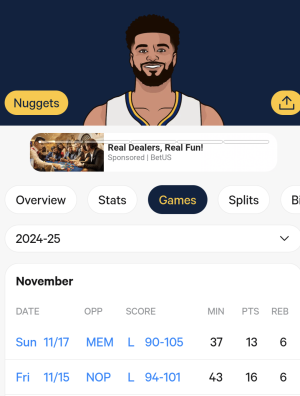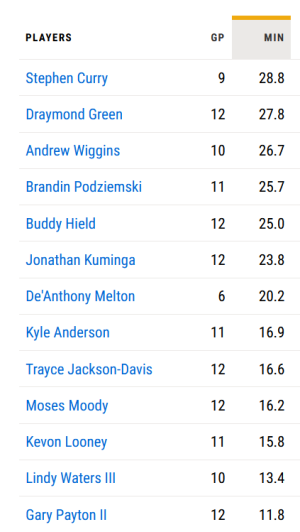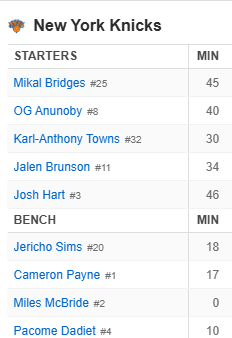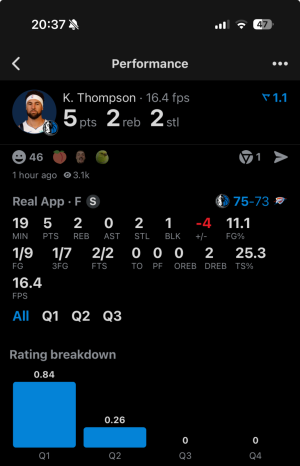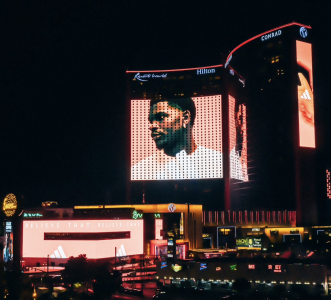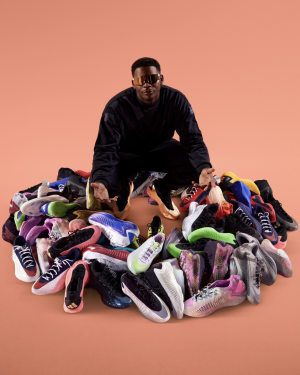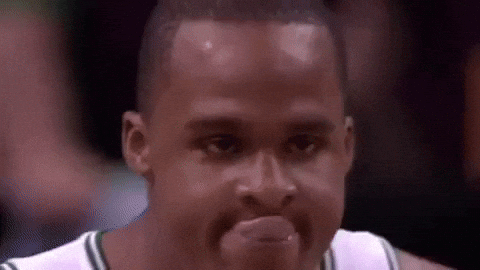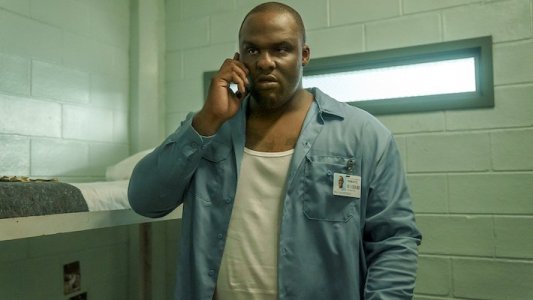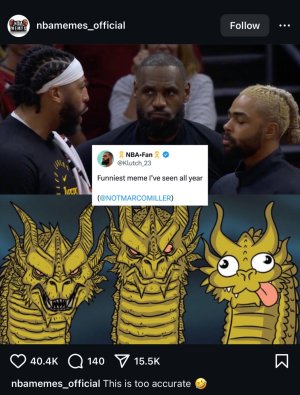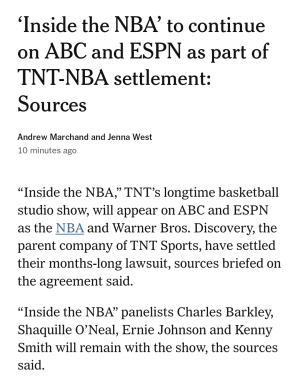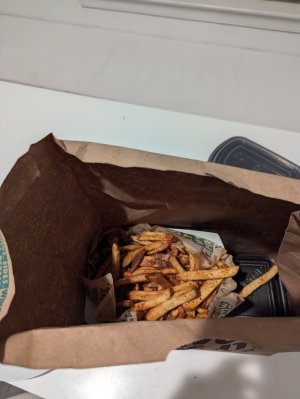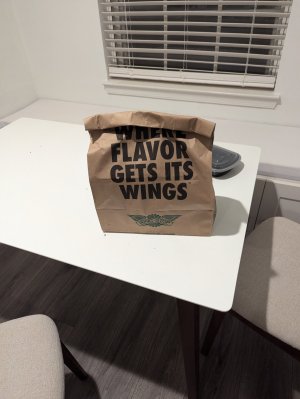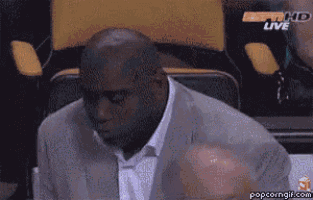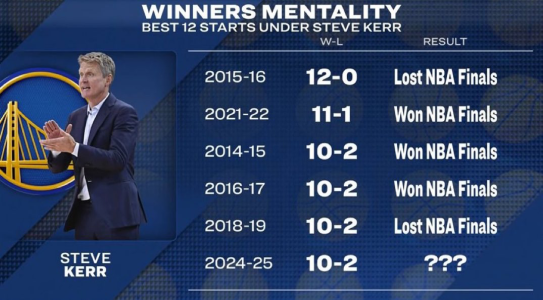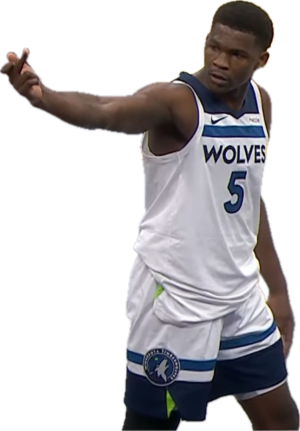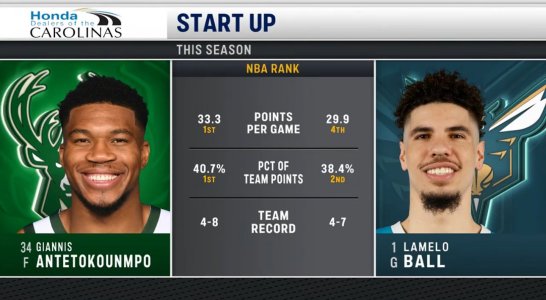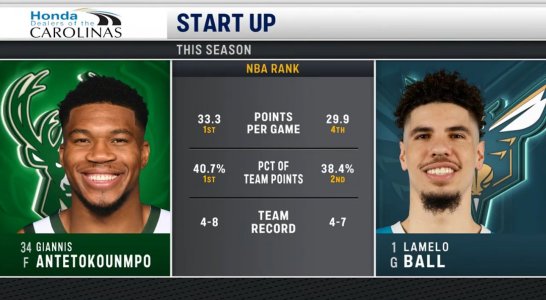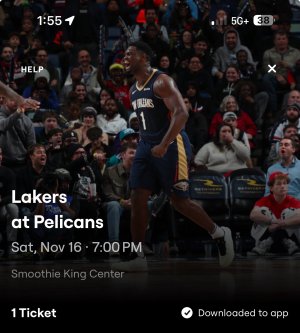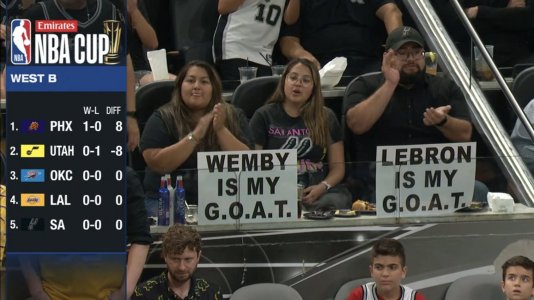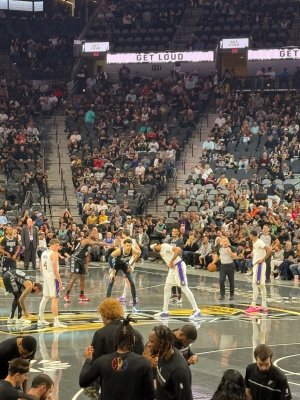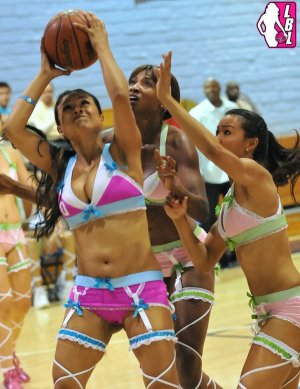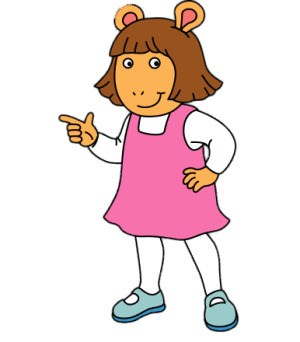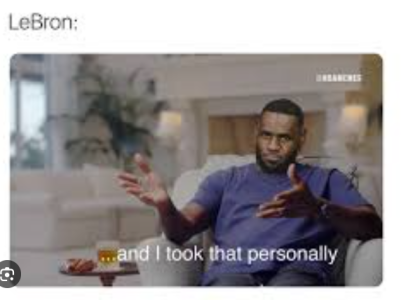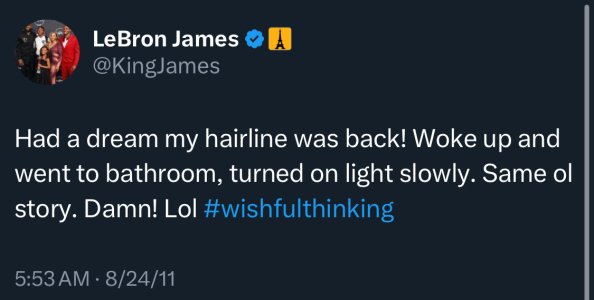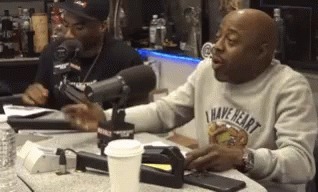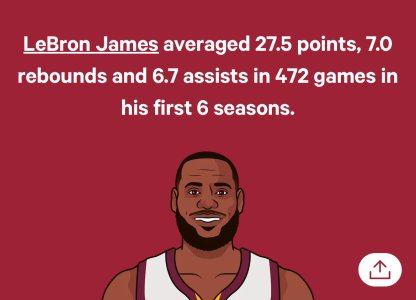big j 33
Supporter
- May 31, 2006
- 36,048
- 16,814
Article?
The NBA’s Board of Governors, on Tuesday, approved the new deal, which begins with the 2025-26 NBA season. It introduces Amazon Prime Video as a media rights streaming partner and reintroduces NBC, which had the NBA package from 1990 to 2002, for both broadcast and streaming rights (via its Peacock streaming service).
As part of the new deal, which will run for 11 years, starting with the 2025-26 season, and pay out $76 billion to the league’s 30 teams, NBC would broadcast games nationally on Tuesdays, while Peacock would have games on Mondays. Both NBC and Amazon would put NBA games into their current slots for NFL broadcasts, on Sunday nights (NBC) and Thursdays (Amazon), after the NFL season concludes.
ABC/ESPN would continue to broadcast the NBA finals, while airing slightly fewer regular season games, and have a conference final every year. Amazon and NBC would alternate years carrying the other conference final.
And Turner, now Warner Bros. Discovery, would be the odd network out.
But, WBD will have a five-day window to match the terms of the new package and hold onto its Thursday night package of games, as well as an annual conference final – and, of course, “Inside” – once the league formally delivers the package to WBD’s corporate offices. NBA Commissioner Adam Silver said at a news conference following the Board of Governors meeting in Las Vegas Tuesday that the media deals were not yet done, and wouldn’t confirm if or when the five-day window for WBD has opened.
So, the waiting will continue for WBD/Turner employees, who’ve been in limbo for months as the parent company negotiated with the league, yet have continued to produce the kind of memorable programming for which Turner and “Inside” have been known for three decades. Silver felt compelled to apologize to WBD/Turner employees for leaving their futures twisting in the wind in his news conference at the start of the finals last month.
It’s something no one wants to truly contemplate. There’s never been anything like “Inside the NBA” in sports media, and there’s not going to be anything like it if it’s gone after next year.
It was, as a friend put it a while back, the TV manifestation of where people who love the NBA assemble every week, a communal hangout. A place where you’d feel comfortable getting a beer, or another substance, maybe, with your friends, and loud talk about your favorite teams and players, or the teams and players that you hated, while inhaling a sandwich and watching the game together, either in person or via group chat.
ADVERTISEMENT
It was a place where you felt … safe.
You felt like you knew Chuck and Shaq and Ernie and Kenny because their actual personalities, who they really were off-camera, came through so clearly on camera. The show had some scripted elements to it, and Ernie did the best he could to keep the show on topic, but for the most part, every week, they went out there and … winged it. Barkley, Smith and Shaq never went to the production meetings before airtime. It was just four guys who actually enjoyed being in each other’s company, riffing off one another. But that requires tremendous trust. The television business does not often engender trust among people who are competing for air time and money and keeping their jobs.
It all started with Charles.
NBA on TNT
Shaquille O’Neal, Ernie Johnson, Kenny Smith and Charles Barkley became must-see tv on “Inside the NBA.” (Brandon Todd/NBAE via Getty Images)
It’s funny. People under a certain age — say, 40 or so — don’t seem to realize this now. But Barkley was as big a superstar in his NBA days as anyone not named Michael Jordan.
Barkley was on both the NBA’s all-time Top 50 and Top 75 teams. He was the 1992-93 NBA MVP. He was an 11-time All-Star. He averaged 23 points, 12.9 rebounds and 3.9 assists in 123 career postseason games, including a 56-point gem against the Warriors in a first-round game in 1994. He was the best player on the Dream Team, in 1992 — a team that included Jordan, Magic and Bird.
Now, to be sure, Magic and Bird were on the back nine of their careers by the time they went to Barcelona for the Olympics, and Jordan was picking his spots after a grueling year leading the Bulls to a successful defense of their championship. But Chuck was nonetheless dominant, a blur in transition, a beast in the paint. And he was, as ever, the go-to guy for anyone with a notepad or camera. (Charles once spent half an hour explaining to reporters in Philly why he wasn’t talking to the local media.)
“I don’t know much about Angola,” he said of the U.S. team’s opening-round Olympic opponent in Barcelona, “but I know they’re in trouble.”
He had as many commercials back in the day as Shaq has now. He hosted “Saturday Night Live” (and beat up Barney the Dinosaur in the process). He got arrested in a Milwaukee bar after punching a weightlifter; he got arrested in Orlando after an incident in a club where he wound up throwing a belligerent patron into a mirror, which crashed through a plate glass window. (Chuck actually didn’t know how many times he’d been arrested over the years. When he got to Turner, TNT, smartly, assigned him a couple of bodyguards.)
He was, then as now, completely fearless, saying whatever he wanted, whenever he wanted. In Philly, he’d verbally immolate his boss, 76ers owner Harold Katz, and do the same to his coaches and teammates, or anyone else who got in his craw.
“I love when they say Magic makes James Worthy better, and Kareem (Abdul-Jabbar) better,” he’d say at his locker. “I have to make Sheldon Jones better.”
So, when Barkley came to “Inside” after his retirement as a player, he could have put up all kinds of caveats and I-won’t-do-thats, befitting a player of his stature. But he didn’t. In fact, he did the exact opposite. He would do anything, including things that made him look ridiculous.
Barkley battled weight problems throughout his playing career and well into his retirement. An overly sensitive superstar could have insisted that fat jokes were off limits on the set. Instead, Barkley leaned into the constant digs at his girth. Weighing 30-plus pounds more than his supposed 290 pounds early in December 2001, Barkley vowed to be under 300 by the end of January 2002. He made it a thing around which “Inside” could build programming! And he followed through on his promise to get weighed “in my drawers” on the show.
ADVERTISEMENT
During Yao Ming’s rookie season, in 2002-03, Kenny insisted that Yao, the celebrated big man from China, would score at least 19 points in a game during his rookie campaign. Chuck said if that happened, he’d “kiss Kenny’s ***” on national TV. Ten days later, Yao went 9 of 9 from the floor and scored 20 against the Lakers. Two days after that, with then-Minnesota Governor Jesse “the Body” Ventura on set, Kenny brought a donkey onto the set. If Chuck kissed the donkey’s ***, Kenny said, the bet would be satisfied.
Chuck puckered up.
I am fairly certain that Jordan would not have done this.
The one time I saw Barkley actually distraught was the night his Suns lost Game 6 of the 1993 Finals, at home, to the Bulls. He drove up to the Houston’s restaurant in downtown Phoenix, alone, after John Paxson’s dagger 3 beat Phoenix in the last seconds. He joined a bunch of sportswriters eating outside. He was down. He really thought the Suns were better than Chicago that season. But he couldn’t get them over the top.
And yet, years later, Chuck let “Inside” clown him for a segment where a set was transformed into “The Champions’ Club,” which you could only enter if you’d won an NBA title. Magic, on set with the crew that week, obviously got in easily with his five championships with the Lakers. So did Kenny, who’d won back-to-back titles with Houston in 1994 and ’95. Ernie got in on Magic’s invite. But after Kenny walked in, with Barkley right behind him, Chuck got stopped at the door by the “bouncer.” Ernie soon stuck his head out of the “club” door, noting all the guys with rings that were supposedly in the club: Fennis Dembo, Mike Penberthy, the late Earl Cureton.
“Oh, y’all are playing a joke on the Chuckster,” Barkley said.
That same ethos applied to Kenny. When Kobe Bryant came out with a new Nike shoe, the Hyperdunk, in 2008, he did a viral ad for Nike with then-teammate Ronny Turiaf in which he, allegedly, jumped over an incoming Aston Martin, so great were the Hyperdunk’s qualities.
ADVERTISEMENT
Naturally, when the Lakers were on TNT, and Kobe had a great game, “Inside” had Bryant on afterward. Kenny said that he, too, had a new Nike shoe coming out — the “Hyperdunk Smiths” — that would soon be in stores. And he, too, could jump over a car!
It didn’t go quite as well as Kobe’s leap.
Shaq also got got, after he joined the show.
“Inside” quickly built a “storyline” where the 7-1, who-knows-how-much-he-weighs self-described “MDE: Most Dominant Ever” center bullied poor Ernie, literally shaking him down for lunch money. But, ultimately, Ernie got his revenge. And, infamously, a moment of extreme clumsiness by the Big Fella in 2017 was replayed, a few thousand times, on “Inside” over the next few years.
Shaq made fun of my headshot. I made fun of his movies. Joe Underhill, a diminutive researcher and field producer who worked his butt off for years, was reborn and became semi-famous as “Underdog,” who’d feed Ernie and others statistical information, appear in skits and be prepared, as O’Neal would say seemingly every week, to put some pithy saying on a T-shirt. And, the portal went both ways: in the last few years, fans have been encouraged to clap back at the crazy things Shaq, Kenny and Chuck said and did, whenever possible.
“Inside” was not for the Sloan crowd. There was no genuflecting at the altar of True Shooting Percentage or PER or Defensive Box Plus-Minus. If endless video breakdowns of the three best ways to ice a pick-and-roll was your thing, this was not your show. And the Insiders reveled in their ignorance; they were definitely eye- and smell-testers, not Second Spectrum guys.
General managers and executives around the league would occasionally rail to me about how little educating about the game Chuck, Kenny and Shaq did with their large platform. (Interestingly, coaches rarely complained.) I would acknowledge the point, but also point to “Inside’s” growing collection of Emmys. Their approach seemed to resonate with an awful lot of viewers, and voters.

Spurs coach Gregg Popovich was one of many to share a dose of wisdom with David Aldridge during his TNT days. (Soobum Im / USA Today)
Nor did “Inside” make the games the network paid billions to air every week sacred, as other networks did. If TNT had a dog of a doubleheader on in January, the “Inside” guys would say it was a dog. Chuck would talk about shows on other networks that he was watching in the green room while TNT aired its crappy-for-that-night NBA fare. A staple at the start of every season was “Who He Play For?,” a faux game show segment that served only to display Barkley’s thimble-like knowledge of non-superstars around the league.
ADVERTISEMENT
But — and this was rarely acknowledged by the show’s critics — nothing excited the studio more than a well-played, riveting game. Chuck, in particular, would fall in love with the last good team he saw on the air, pledging that they were the best (or second-best, or third-best) team in their conference. He made Manu Ginobili into a household name with his weekly “GINOBILI!!” fanboying. On the other hand, Chuck’s many wrong “gar-run-teeed!” game/series predictions became their own cottage industry.
When “Inside” did focus on the games and players, though, its analysts’ praise was as welcomed as their scorn was withering. It made clear the lie of so many of the current players who dismissed the “Inside” guys as fossils, incapable of playing or understanding today’s game. If they were so out of touch, why did the players care so much what they said about them?
O’Neal’s “Shaqtin’ a Fool” segments became must-watch TV, as he (more accurately, the show’s producers) lampooned the biggest blunders players made in games every week. Shaq crushed JaVale McGee to the point where it became kind of cringeworthy. It wasn’t that McGee wasn’t messing up, occasionally in spectacular fashion, but a) he wasn’t doing it every second of every game, as Shaqtin’ made it seem, and b) Shaq was rubbing his nose in it every week.
When McGee had a good game in 2013 while with the Nuggets and was invited on “Inside” afterward, he told Shaq to his face that he didn’t watch what he called “Shaqtin’ a ****.” O’Neal’s and McGee’s mothers actually had to step in and squash the beef between their sons.
And there was so much beef over the years. Chuck vs. Durant. Shaq versus Chuck. Shaq versus Kenny. Chuck versus Draymond Green. Shaq versus Shannon Sharpe. Shaq and Chuck versus Kendrick Perkins. Chuck, infamously, versus the women of San Antonio. A postgame skirmish between the Clippers and Rockets, with Houston players supposedly trying to break into the Clippers’ locker room, became part of “Inside” lore when reporter Ros Gold Onwude noted a “police presence” outside the Rockets’ team bus, and Shaq and Chuck eviscerated the softness of whoever thought cops were needed to settle things that the players should have handled themselves.
ADVERTISEMENT
But it was because everyone watching had seen Barkley’s struggles with weight over the years that his digs at the Pelicans’ Zion Williamson hit so hard. It was because Barkley was fearless with his words (critics might say careless) that he could so effectively lampoon the account of actor Jussie Smollett that he’d been mugged late at night in Chicago by two men, one of whom allegedly yelled racial slurs at Smollett. And it was because “Inside” was so well-respected by so many that it’s “Gone Fishin'” segments, sending every team off into the summer after it was eliminated in the playoffs, were so eagerly anticipated.
Yet, on a dime, “Inside” could, and did, get serious.
In the midst of COVID-19 in 2020, the crew assembled remotely after George Floyd’s memorial in Minneapolis. “This plague of racism, which comes at the same time as the pandemic, demands our attention,” Ernie said.
They talked about Jan. 6. They used the start of their pregame show before Game 4 of the Western Conference final in 2022 to discuss the mass shooting earlier that day in Uvalde, Texas, that resulted in the death of 19 children and two teachers. When players in the Orlando bubble refused to play scheduled playoff games in 2020 to protest the shooting of Jacob Blake in Kenosha, Wis., and to protest police violence around the country, Kenny followed suit, walking off the set in solidarity with the players. Ernie talked openly in 2006 about his cancer diagnosis; his partners spoke in his absence, eloquently and emotionally, after Ernie’s son, Michael, died at 33, in 2021.
And they were there for Shaq after Kobe died. They understood. We understood. Shaq and Kobe had mad beef when they were together with the Lakers. But you can fight your brother, call him all kinds of names, in the moment. He’s still your brother. He’s still family.
ADVERTISEMENT
None of this felt forced. No one brought scorching hot takes to these topics. They talked through things, as friends do with one another at hard moments. They stumbled over their words. They talked over one another. Often, they disagreed. Unique among such shows, the “Inside” crew had the cachet to pivot from the ridiculous to the solemn, and back, in a matter of minutes. All due respect, but you didn’t see that — or, at least, you didn’t remember seeing that — on the Sunday NFL shows, or the Saturday college football shows.
“Inside the NBA” always stood on its own. Just as multiple generations have grown up watching The Simpsons,” the “Today Show” or “Sesame Street,” “Inside” has just been so indefatigably there for so long, and has so rarely failed to entertain or at least make you react, that it’s hard to imagine turning on a television going forward without being able to see what the fellas are up to this week.
As part of the new deal, which will run for 11 years, starting with the 2025-26 season, and pay out $76 billion to the league’s 30 teams, NBC would broadcast games nationally on Tuesdays, while Peacock would have games on Mondays. Both NBC and Amazon would put NBA games into their current slots for NFL broadcasts, on Sunday nights (NBC) and Thursdays (Amazon), after the NFL season concludes.
ABC/ESPN would continue to broadcast the NBA finals, while airing slightly fewer regular season games, and have a conference final every year. Amazon and NBC would alternate years carrying the other conference final.
And Turner, now Warner Bros. Discovery, would be the odd network out.
But, WBD will have a five-day window to match the terms of the new package and hold onto its Thursday night package of games, as well as an annual conference final – and, of course, “Inside” – once the league formally delivers the package to WBD’s corporate offices. NBA Commissioner Adam Silver said at a news conference following the Board of Governors meeting in Las Vegas Tuesday that the media deals were not yet done, and wouldn’t confirm if or when the five-day window for WBD has opened.
So, the waiting will continue for WBD/Turner employees, who’ve been in limbo for months as the parent company negotiated with the league, yet have continued to produce the kind of memorable programming for which Turner and “Inside” have been known for three decades. Silver felt compelled to apologize to WBD/Turner employees for leaving their futures twisting in the wind in his news conference at the start of the finals last month.
It’s something no one wants to truly contemplate. There’s never been anything like “Inside the NBA” in sports media, and there’s not going to be anything like it if it’s gone after next year.
It was, as a friend put it a while back, the TV manifestation of where people who love the NBA assemble every week, a communal hangout. A place where you’d feel comfortable getting a beer, or another substance, maybe, with your friends, and loud talk about your favorite teams and players, or the teams and players that you hated, while inhaling a sandwich and watching the game together, either in person or via group chat.
ADVERTISEMENT
It was a place where you felt … safe.
You felt like you knew Chuck and Shaq and Ernie and Kenny because their actual personalities, who they really were off-camera, came through so clearly on camera. The show had some scripted elements to it, and Ernie did the best he could to keep the show on topic, but for the most part, every week, they went out there and … winged it. Barkley, Smith and Shaq never went to the production meetings before airtime. It was just four guys who actually enjoyed being in each other’s company, riffing off one another. But that requires tremendous trust. The television business does not often engender trust among people who are competing for air time and money and keeping their jobs.
It all started with Charles.
NBA on TNT
Shaquille O’Neal, Ernie Johnson, Kenny Smith and Charles Barkley became must-see tv on “Inside the NBA.” (Brandon Todd/NBAE via Getty Images)
It’s funny. People under a certain age — say, 40 or so — don’t seem to realize this now. But Barkley was as big a superstar in his NBA days as anyone not named Michael Jordan.
Barkley was on both the NBA’s all-time Top 50 and Top 75 teams. He was the 1992-93 NBA MVP. He was an 11-time All-Star. He averaged 23 points, 12.9 rebounds and 3.9 assists in 123 career postseason games, including a 56-point gem against the Warriors in a first-round game in 1994. He was the best player on the Dream Team, in 1992 — a team that included Jordan, Magic and Bird.
Now, to be sure, Magic and Bird were on the back nine of their careers by the time they went to Barcelona for the Olympics, and Jordan was picking his spots after a grueling year leading the Bulls to a successful defense of their championship. But Chuck was nonetheless dominant, a blur in transition, a beast in the paint. And he was, as ever, the go-to guy for anyone with a notepad or camera. (Charles once spent half an hour explaining to reporters in Philly why he wasn’t talking to the local media.)
“I don’t know much about Angola,” he said of the U.S. team’s opening-round Olympic opponent in Barcelona, “but I know they’re in trouble.”
He had as many commercials back in the day as Shaq has now. He hosted “Saturday Night Live” (and beat up Barney the Dinosaur in the process). He got arrested in a Milwaukee bar after punching a weightlifter; he got arrested in Orlando after an incident in a club where he wound up throwing a belligerent patron into a mirror, which crashed through a plate glass window. (Chuck actually didn’t know how many times he’d been arrested over the years. When he got to Turner, TNT, smartly, assigned him a couple of bodyguards.)
He was, then as now, completely fearless, saying whatever he wanted, whenever he wanted. In Philly, he’d verbally immolate his boss, 76ers owner Harold Katz, and do the same to his coaches and teammates, or anyone else who got in his craw.
“I love when they say Magic makes James Worthy better, and Kareem (Abdul-Jabbar) better,” he’d say at his locker. “I have to make Sheldon Jones better.”
So, when Barkley came to “Inside” after his retirement as a player, he could have put up all kinds of caveats and I-won’t-do-thats, befitting a player of his stature. But he didn’t. In fact, he did the exact opposite. He would do anything, including things that made him look ridiculous.
Barkley battled weight problems throughout his playing career and well into his retirement. An overly sensitive superstar could have insisted that fat jokes were off limits on the set. Instead, Barkley leaned into the constant digs at his girth. Weighing 30-plus pounds more than his supposed 290 pounds early in December 2001, Barkley vowed to be under 300 by the end of January 2002. He made it a thing around which “Inside” could build programming! And he followed through on his promise to get weighed “in my drawers” on the show.
ADVERTISEMENT
During Yao Ming’s rookie season, in 2002-03, Kenny insisted that Yao, the celebrated big man from China, would score at least 19 points in a game during his rookie campaign. Chuck said if that happened, he’d “kiss Kenny’s ***” on national TV. Ten days later, Yao went 9 of 9 from the floor and scored 20 against the Lakers. Two days after that, with then-Minnesota Governor Jesse “the Body” Ventura on set, Kenny brought a donkey onto the set. If Chuck kissed the donkey’s ***, Kenny said, the bet would be satisfied.
Chuck puckered up.
I am fairly certain that Jordan would not have done this.
The one time I saw Barkley actually distraught was the night his Suns lost Game 6 of the 1993 Finals, at home, to the Bulls. He drove up to the Houston’s restaurant in downtown Phoenix, alone, after John Paxson’s dagger 3 beat Phoenix in the last seconds. He joined a bunch of sportswriters eating outside. He was down. He really thought the Suns were better than Chicago that season. But he couldn’t get them over the top.
And yet, years later, Chuck let “Inside” clown him for a segment where a set was transformed into “The Champions’ Club,” which you could only enter if you’d won an NBA title. Magic, on set with the crew that week, obviously got in easily with his five championships with the Lakers. So did Kenny, who’d won back-to-back titles with Houston in 1994 and ’95. Ernie got in on Magic’s invite. But after Kenny walked in, with Barkley right behind him, Chuck got stopped at the door by the “bouncer.” Ernie soon stuck his head out of the “club” door, noting all the guys with rings that were supposedly in the club: Fennis Dembo, Mike Penberthy, the late Earl Cureton.
“Oh, y’all are playing a joke on the Chuckster,” Barkley said.
That same ethos applied to Kenny. When Kobe Bryant came out with a new Nike shoe, the Hyperdunk, in 2008, he did a viral ad for Nike with then-teammate Ronny Turiaf in which he, allegedly, jumped over an incoming Aston Martin, so great were the Hyperdunk’s qualities.
ADVERTISEMENT
Naturally, when the Lakers were on TNT, and Kobe had a great game, “Inside” had Bryant on afterward. Kenny said that he, too, had a new Nike shoe coming out — the “Hyperdunk Smiths” — that would soon be in stores. And he, too, could jump over a car!
It didn’t go quite as well as Kobe’s leap.
Shaq also got got, after he joined the show.
“Inside” quickly built a “storyline” where the 7-1, who-knows-how-much-he-weighs self-described “MDE: Most Dominant Ever” center bullied poor Ernie, literally shaking him down for lunch money. But, ultimately, Ernie got his revenge. And, infamously, a moment of extreme clumsiness by the Big Fella in 2017 was replayed, a few thousand times, on “Inside” over the next few years.
Shaq made fun of my headshot. I made fun of his movies. Joe Underhill, a diminutive researcher and field producer who worked his butt off for years, was reborn and became semi-famous as “Underdog,” who’d feed Ernie and others statistical information, appear in skits and be prepared, as O’Neal would say seemingly every week, to put some pithy saying on a T-shirt. And, the portal went both ways: in the last few years, fans have been encouraged to clap back at the crazy things Shaq, Kenny and Chuck said and did, whenever possible.
“Inside” was not for the Sloan crowd. There was no genuflecting at the altar of True Shooting Percentage or PER or Defensive Box Plus-Minus. If endless video breakdowns of the three best ways to ice a pick-and-roll was your thing, this was not your show. And the Insiders reveled in their ignorance; they were definitely eye- and smell-testers, not Second Spectrum guys.
General managers and executives around the league would occasionally rail to me about how little educating about the game Chuck, Kenny and Shaq did with their large platform. (Interestingly, coaches rarely complained.) I would acknowledge the point, but also point to “Inside’s” growing collection of Emmys. Their approach seemed to resonate with an awful lot of viewers, and voters.

Spurs coach Gregg Popovich was one of many to share a dose of wisdom with David Aldridge during his TNT days. (Soobum Im / USA Today)
Nor did “Inside” make the games the network paid billions to air every week sacred, as other networks did. If TNT had a dog of a doubleheader on in January, the “Inside” guys would say it was a dog. Chuck would talk about shows on other networks that he was watching in the green room while TNT aired its crappy-for-that-night NBA fare. A staple at the start of every season was “Who He Play For?,” a faux game show segment that served only to display Barkley’s thimble-like knowledge of non-superstars around the league.
ADVERTISEMENT
But — and this was rarely acknowledged by the show’s critics — nothing excited the studio more than a well-played, riveting game. Chuck, in particular, would fall in love with the last good team he saw on the air, pledging that they were the best (or second-best, or third-best) team in their conference. He made Manu Ginobili into a household name with his weekly “GINOBILI!!” fanboying. On the other hand, Chuck’s many wrong “gar-run-teeed!” game/series predictions became their own cottage industry.
When “Inside” did focus on the games and players, though, its analysts’ praise was as welcomed as their scorn was withering. It made clear the lie of so many of the current players who dismissed the “Inside” guys as fossils, incapable of playing or understanding today’s game. If they were so out of touch, why did the players care so much what they said about them?
O’Neal’s “Shaqtin’ a Fool” segments became must-watch TV, as he (more accurately, the show’s producers) lampooned the biggest blunders players made in games every week. Shaq crushed JaVale McGee to the point where it became kind of cringeworthy. It wasn’t that McGee wasn’t messing up, occasionally in spectacular fashion, but a) he wasn’t doing it every second of every game, as Shaqtin’ made it seem, and b) Shaq was rubbing his nose in it every week.
When McGee had a good game in 2013 while with the Nuggets and was invited on “Inside” afterward, he told Shaq to his face that he didn’t watch what he called “Shaqtin’ a ****.” O’Neal’s and McGee’s mothers actually had to step in and squash the beef between their sons.
And there was so much beef over the years. Chuck vs. Durant. Shaq versus Chuck. Shaq versus Kenny. Chuck versus Draymond Green. Shaq versus Shannon Sharpe. Shaq and Chuck versus Kendrick Perkins. Chuck, infamously, versus the women of San Antonio. A postgame skirmish between the Clippers and Rockets, with Houston players supposedly trying to break into the Clippers’ locker room, became part of “Inside” lore when reporter Ros Gold Onwude noted a “police presence” outside the Rockets’ team bus, and Shaq and Chuck eviscerated the softness of whoever thought cops were needed to settle things that the players should have handled themselves.
ADVERTISEMENT
But it was because everyone watching had seen Barkley’s struggles with weight over the years that his digs at the Pelicans’ Zion Williamson hit so hard. It was because Barkley was fearless with his words (critics might say careless) that he could so effectively lampoon the account of actor Jussie Smollett that he’d been mugged late at night in Chicago by two men, one of whom allegedly yelled racial slurs at Smollett. And it was because “Inside” was so well-respected by so many that it’s “Gone Fishin'” segments, sending every team off into the summer after it was eliminated in the playoffs, were so eagerly anticipated.
Yet, on a dime, “Inside” could, and did, get serious.
In the midst of COVID-19 in 2020, the crew assembled remotely after George Floyd’s memorial in Minneapolis. “This plague of racism, which comes at the same time as the pandemic, demands our attention,” Ernie said.
They talked about Jan. 6. They used the start of their pregame show before Game 4 of the Western Conference final in 2022 to discuss the mass shooting earlier that day in Uvalde, Texas, that resulted in the death of 19 children and two teachers. When players in the Orlando bubble refused to play scheduled playoff games in 2020 to protest the shooting of Jacob Blake in Kenosha, Wis., and to protest police violence around the country, Kenny followed suit, walking off the set in solidarity with the players. Ernie talked openly in 2006 about his cancer diagnosis; his partners spoke in his absence, eloquently and emotionally, after Ernie’s son, Michael, died at 33, in 2021.
And they were there for Shaq after Kobe died. They understood. We understood. Shaq and Kobe had mad beef when they were together with the Lakers. But you can fight your brother, call him all kinds of names, in the moment. He’s still your brother. He’s still family.
ADVERTISEMENT
None of this felt forced. No one brought scorching hot takes to these topics. They talked through things, as friends do with one another at hard moments. They stumbled over their words. They talked over one another. Often, they disagreed. Unique among such shows, the “Inside” crew had the cachet to pivot from the ridiculous to the solemn, and back, in a matter of minutes. All due respect, but you didn’t see that — or, at least, you didn’t remember seeing that — on the Sunday NFL shows, or the Saturday college football shows.
“Inside the NBA” always stood on its own. Just as multiple generations have grown up watching The Simpsons,” the “Today Show” or “Sesame Street,” “Inside” has just been so indefatigably there for so long, and has so rarely failed to entertain or at least make you react, that it’s hard to imagine turning on a television going forward without being able to see what the fellas are up to this week.











